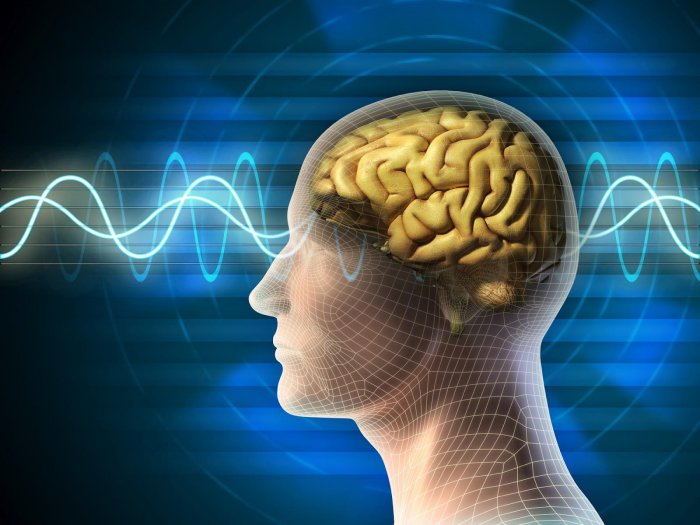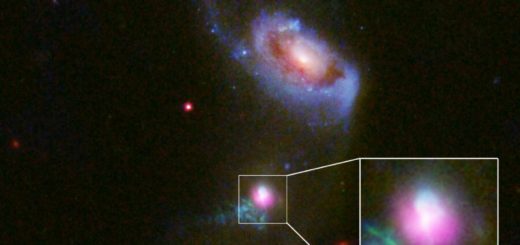Physical Source Of Consciousness May Have Been Located In The Brain
For millennia, philosophers have struggled to define human consciousness. What does it mean to be human? How does the human brain generate our subjective experiences? What is it that causes us to be aware of our existence?
Explaining the nature of consciousness is one of the most important and perplexing areas of philosophy, and locating regions of the brain that may play a role maintaining it, is very difficult. Some scientists connect consciousness to the mind, confusing it with self-awareness, whereas others recognize that these elements are all interconnected.
Scientists at Harvard University say they may have found the physical source of consciousness. It’s a remarkable discovery that could shed new light on what it really means to be human.

“For the first time, we have found a connection between the brainstem region involved in arousal and regions involved in awareness, two prerequisites for consciousness,” explained the lead researcher, Michael Fox, from the Beth Israel Deaconess Medical Centre at Harvard Medical School.
“A lot of pieces of evidence all came together to point to this network playing a role in human consciousness.”
Classical neurology holds that arousal and awareness are two critical components of consciousness. Arousal is likely regulated by the brainstem – the portion of the brain, contiguous with the spinal cord, that is responsible for the sleep/wake cycle and cardiac and respiratory rates.
Awareness, another critical component of consciousness, has long been thought to reside somewhere in the cortex, the outer layer of the brain responsible for many of its higher functions.
The researchers analyzed 36 patients with brainstem lesions, of which 12 led to coma and 24 did not. Mapping the injuries revealed that a small “coma-specific” area of the brainstem – the rostral dorsolateral pontine tegmentum – was significantly associated with coma. Ten out of the 12 coma-inducing brainstem lesions involved this area, while just one of the 24 control lesions did.
Using a a wiring diagram of the healthy human brain – based on a large, shared data set called the Human Connectome, scientists could identify which parts of the brain were connected to these coma-causing lesions.
Their analysis revealed two areas in the cortex of the brain that were significantly connected to the coma-specific region of the brainstem.
One sat in the left, ventral, anterior insula (AI), the other in the pregenual anterior cingulate cortex (pACC). Both regions have been implicated previously in arousal and awareness.
“We now have a great map of how the brain is wired up in the Human Connectome,” said Fox, who is also an Assistant Professor of Neurology at Harvard Medical School. “We can look at not just the location of lesions, but also their connectivity. Over the past year, researchers in my lab have used this approach to understand visual and auditory hallucinations, impaired speech, and movement disorders.
The study gives us a somewhat better understanding of consciousness and could help answer the question why coma patients lose their conscious awareness.
Although we gain knowledge regularly and are unlocking the secrets of our mind, there are still many things we don’t know about the power of the mind.
Some scientists have suggested that the unconscious mind is a shadow of the “real” conscious mind and we might possess a second hidden intelligence.
The scientific problem is it is really unknown how gray matter generates consciousness. Many strange cases have been reported. For example the theory of consciousness was challenged by man who misses most of his brain and still exhibits normal behavior.



 Creators of mankind
Creators of mankind Description of “Tall white aliens”
Description of “Tall white aliens” Where they came from?
Where they came from? About hostile civilizations
About hostile civilizations The war for the Earth
The war for the Earth “Tall white aliens” about eternal life
“Tall white aliens” about eternal life Video: “Nordic aliens”
Video: “Nordic aliens” Aliens
Aliens Alien encounters
Alien encounters The aliens base
The aliens base UFO
UFO Technology UFO
Technology UFO Underground civilization
Underground civilization Ancient alien artifacts
Ancient alien artifacts Military and UFO
Military and UFO Mysteries and hypotheses
Mysteries and hypotheses Scientific facts
Scientific facts


















